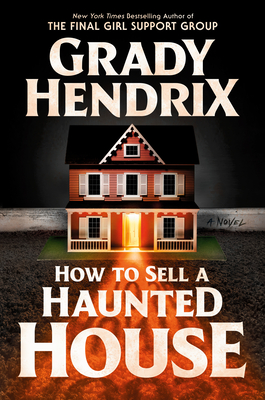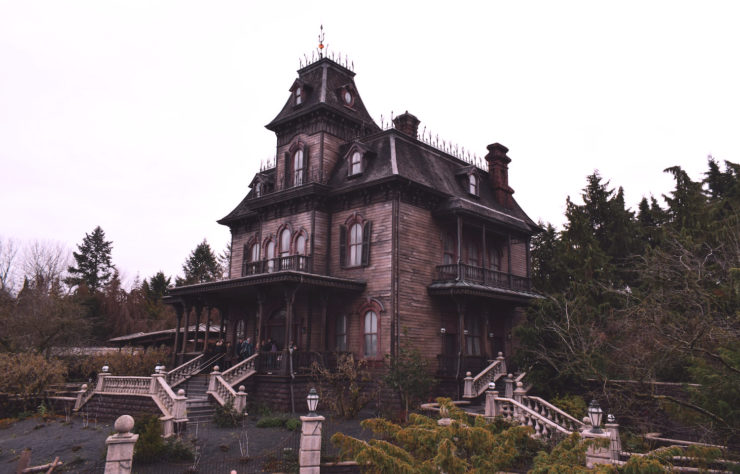No one wants to see a ghost in their house. A single phantom voice, a quick glimpse of a transparent hag floating down the hall, one visit from an invisible entity that crushes your chest while you sleep, and we’re all ready to call an exorcist and sell at a loss. But seeing a ghost in someone else’s house? That’s an entirely different story. We’ll drive any distance, pay any ticket price, and wait in any line to see a ghost as long as we’re reasonably certain it won’t follow us home. Human nature being what it is, there are plenty of people who will happily charge us money so we can have a safe, consensual encounter with the unknown, and visit the gift shop later.
Welcome to the exciting, and morally sketchy, world of ghost tourism.
People in the 19th century formed a mob for just about anything, but the one thing they really loved to form a mob for—besides food prices, fishing, theater, corpse stealing, and politics—was to see ghosts. A thousand people gathered in 1843 to see a ghost appear to a sailor, 2,000 gathered in 1868 to see the ghost of a corpse that had been pulled out of a river, 3,000 gathered every night to hear ghosts knocking on the walls of a house in 1852. In 1874, 6,000 people gathered to see a ghost which turned out to be the picture of a ghost made of white paper pinned to a tree. No matter. The same sized crowd came back to see it every night for a week. The owners of public houses cleaned up at these occasions, and as early as 1858 tour guides listed haunted destinations for the curious tourist with an interest in an encounter with the world beyond.
Of course, ghosts rarely appear on demand, and so, in order to ensure a consistent supply of top quality ghosts, some people turned to building their own haunted houses. In 1915, the wagon company Orton & Spooner built what became known as the Orton & Spooner Ghost House in Liphook, England. Haunted attractions soon became part of carnival culture in the Twenties and Thirties, but it achieved peak capitalism in 1969 when the Haunted Mansion opened in Disneyland. Walt Disney had planned a haunted house for his theme park from the very beginning, and one appeared in the original park plans from 1955, but it took fourteen years to get it right.
If you couldn’t afford to build your own haunted house, however, you could buy a property that looked like it might be haunted and then make up lies about its history. Which is exactly what John and Mayme Brown did when they bought Sarah Winchester’s San Jose mansion. The story they told was that reclusive, haunted Sarah Winchester built her 24,000 square foot “Mystery House” with its seventeen chimneys, two thousand doors (some opening into midair), dozens of staircases (some to nowhere), and its labyrinthine layout because she feared the ghosts who had been killed by the Winchester Repeater rifle, which formed the foundation of her inherited fortune.
In reality, Sarah Winchester moved to California and built her house after her mother, father-in-law, sister, and husband all died in the span of two years. A self-taught architect, interior decorator, and landscape designer, she built her mansion room by room, experimenting as she went, tearing out work that didn’t meet her standards or that she got wrong. This kind of perpetual construction wasn’t all that unusual for a Gilded Age heiress, but what was unusual is that Sarah did it without an architect leading the way. She was a hands-on owner, who wanted to learn by doing. Her reputation as a recluse came from the fact that her hands were disfigured by arthritis and she was deeply ashamed of her bad dentistry and so avoided the public in later years. The stairs to nowhere and doors opening into midair were the result of the 1906 San Francisco earthquake that wrecked her home. Rather than tearing down damaged wings and rebuilding from the ground up, she chose not to rebuild some parts of the house at all, leaving the earthquake’s scars visible, much to the irritation of her neighbors who did not want to be reminded of the tragedy that had tanked their property values.
A year after she died in 1922, the Browns leased her house and began capitalizing on ghost stories about Winchester that had started spreading in the press a few decades before. They claimed that Winchester’s guilt about the role her family’s rifle had played in slaughtering thousands of Native Americans during the period of westward expansion drove her construction project, but Winchester never expressed any public remorse over the source of her fortune. The only cause she publicly spoke about was tuberculosis, which had taken her beloved husband at forty-three years old, and she donated massive sums to fight the disease. But once you’re dead, no one wants to hear what you have to say, and any story new owners tell will always eclipse the truth.
Frances Kermeen bought the Myrtles Plantation in St. Francisville, LA hoping to transform it into a romantic bed and breakfast—however (her story goes), she saw her dreams nearly extinguished when a bunch of ghosts showed up. No one wants to get romantic when there are ghosts around. A local newspaper ran the story of her dashed dreams which got picked up by The Today Show and Ripley’s Believe It Or Not. Instead of destroying her dream, the publicity resulted in a windfall as tourists flocked to the Myrtles from all over the country, hoping to see a ghost themselves.
According to the Myrtles Plantation website, “the South will always provide us with tales of romance and mystery,” and this plantation, which is “One of America’s Most Haunted Homes,” has both plenty of romance and oodles of mystery. There’s the ghost of Chloe, an enslaved worker who had her ears cut off for listening at doors, and who was lynched for poisoning the family (by other enslaved workers, not by White people, of course). There’s the ghost of a Native American woman hanging around, too, probably because the plantation is rumored to be built on a Tunica burial ground. There’s a haunted spot where three Union soldiers were killed while trying to loot the house. There’s the roaming ghost of the son of the man who built it, stabbed to death in a fight over a gambling debt, the ghost of the caretaker who was killed in a 1927 robbery, and many more. According to public records and the descendants of the family who built the Myrtles, none of this is true, except maybe the bit about the Tunica burial ground, but given that most of the United States is a de facto burial ground for the thousands of Native Americans murdered here, that’s not a very unique selling point.
If you can’t find a plantation, you could buy an old bordello and fill it with real or fictional ghosts. Or you could keep your overhead low by simply taking people on street-side tours of former brothels. Visit El Paso, the company charged with marketing the city of El Paso, sports a slick website that advertises a Haunted Brothel Tour that is “NOT for small children, the faint of heart, or the easily offended.” Once you’ve seen El Paso’s haunted brothels you can head over to Fort Worth to see Miss Molly’s Hotel, which was also a former brothel where “visitors experience everything from spirit sightings to inexplicable smells,” then try the Bullets and Bordellos tour of Tombstone, Arizona, or visit the historic Fairmont Hotel in Deadwood, South Dakota for its Paranormal and Brothel Tours.
Buy the Book


How to Sell a Haunted House
The actual dead sex workers and enslaved laborers at places like Miss Molly’s Hotel and the Myrtles Plantation are not relevant to those locations’ current economic models. But is there a stronger word than “ironic” to apply to the fact that these living human beings were exploited to enrich the former owners when they were alive and they’re still being exploited to enrich the current owners now that they’re dead? For all the talk about how everyone has a story, and we should all tell our stories, and the liberating powers of story, you don’t hear much about storytelling as a trap, or the use of narrative to weave a virtual prison where people exploited in life are exploited in death, robbed over and over again of peace and dignity. If you believe in ghosts—and if you’re on a haunted bordello tour you either believe in ghosts or you’re wasting your money—you might want to take a moment to question the morality of defining dead human beings by the worst days of their lives, and the ethics of visiting them on the site of their oppression.
But there is one kind of ghost tourism that’s a model of liberation: ghost tourism for ghosts. Peter Damian, a 10th-century monk, related the story of a woman in Rome who was shocked to see a familiar figure coming out of a basilica dedicated to the Virgin Mary. She asked, as one would, “Are you not my godmother, Marozia, who recently died?” Yes, the ghost of Marozia said, I am. “How are you doing?” the woman asked, to which Marozia answered she was burning in Hell because she had gone to confession before she died, but had totally forgotten to mention the fact that she was a fun-loving lesbian back in the day, and she hadn’t mentioned all the girls she’d had sex with, either, and so she hadn’t been absolved of that sin, and was sent to Hell for it. However, the Virgin Mary decided that enough was enough and freed Marozia and her fellow lesbians from Hell (about 20,000–30,000 of them, apparently) and they were now going on a ghost tour of all the holy sites dedicated to the Virgin Mary because they had decided, posthumously, they were big fans of her work. Then she disappeared, presumably to do more ghost tourism. The good kind, I mean.
Grady Hendrix is a novelist and screenwriter living in New York City. His latest book, How to Sell a Haunted House, appears on January 17, and you can learn more dumb facts about him at gradyhendrix.com.










